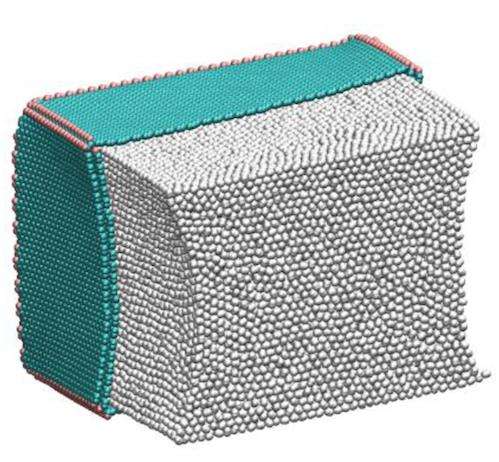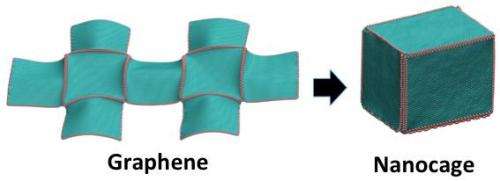Nanomolecular origami boxes hold big promise for energy storage

(Phys.org) —If you think your origami skills can't be beat – try this: (1) use the world's thinnest material, (2) make the origami fold and unfold itself, and (3) pack into your miniscule origami box enough hydrogen atoms to exceed future U.S. goals for hydrogen energy storage devices. Researchers from the University of Maryland have done all three.
Graphene is the world's thinnest material, just one atom thick. Mechanical engineers Shuze Zhu and Teng Li have found that they can make tiny squares of graphene fold into a box, which will open and close itself in response to an electric charge.
Watch a video of the Nanobox open and close:
Inside the box, they've tucked hydrogen atoms, and have done so more efficiently than was thought possible. According to the U.S. Department of Energy (DOE), hydrogen storage is a key enabling technology for the advancement of hydrogen and fuel cell power technologies in transportation, stationary, and portable applications. The DOE is searching for ways to make storing energy with hydrogen a practical possibility. Department goals include: by 2017 development of techniques that enable packing in 5.5 percent hydrogen by weight, and by 2020, stretching this achievement to 7.5 percent.

Li's team has already crossed those thresholds, with a hydrogen storage density of 9.5 percent hydrogen by weight. The team has also demonstrated the potential to reach an even higher density and doing so is a future research goal.
"Just like paper origami that can make complicated 3-D structures from 2-D paper, graphene origami allows us to design and fabricate carbon nanostructures that are not naturally existing but of desirable properties," said Li. "We have made nano-baskets, as well as these new nano-cages to hold hydrogen and other molecular cargos."
More information: The research paper is now published online by ACS Nano: pubs.acs.org/doi/ipdf/10.1021/nn500025t
Journal information: ACS Nano
Provided by University of Maryland





















